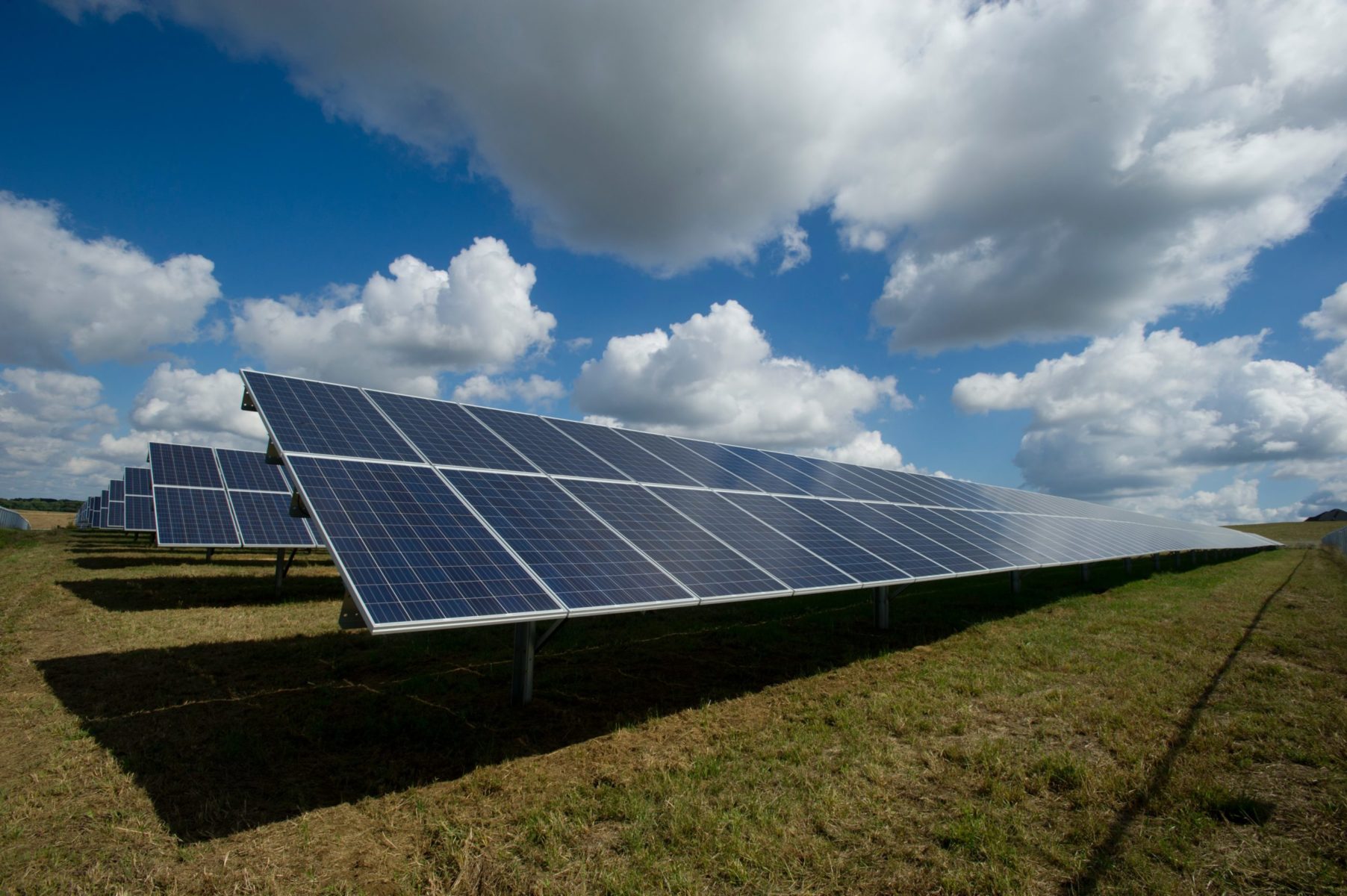In New York’s fast-growing solar market, a focus on assessing “value”
As New York proceeds with its energy-system overhaul, solar power is booming, and regulators and industry sources say that finding a way to accurately value solar’s contribution to the grid will be key to sustaining that growth.
Governor Cuomo’s Reforming the Energy Vision, or REV, aims to incentivize utilities to incorporate solar, wind and other distributed resources into their operations, as an alternative to traditional grid investments. The goal is to create a more resilient, greener, more affordable grid, and help New York achieve its ambitious clean-energy and climate targets, including getting half of the state’s energy from renewable sources by 2050.

Photo by American Public Power Association on Unsplash
By all accounts, the market is soaring. Solar development has climbed from 74 megawatts (MW) in 2011 to more than 600 MW today, enough to power around 100,000 homes, and the state has the fastest-growing solar workforce in the country. That upward trajectory has been propelled in part by NY-Sun, a $1 billion program that offers incentives to homeowners, businesses, and commercial establishments to install solar panels.
Requests from residents looking to host solar arrays have skyrocketed in some utility territories. “We went from receiving about 1,000 applications a year to about 1,000 applications a month,” said Michael Voltz, director of energy efficiency and renewables for PSEG Long Island, during a solar summit organized by the City University of New York on June 20. “I’m not really surprised about the change; what I’m really surprised about is the pace,” he said.
North of New York City, some utilities in Orange County have been inundated with applications from solar developers looking to participate in the state’s new Shared Renewables program, which launched on May 1. The program enables New Yorkers to purchase a portion of their power from a solar installation located in their community. It’s aimed at the nearly three-quarters of the state’s residents who are renters or otherwise can’t host solar panels on their property.
Land in Orange County is relatively cheap, and power demand is high, which makes the investment in community solar projects attractive to solar developers there, said utility leaders speaking at the conference. But they cautioned that cost and logistical issues mean it simply isn’t possible to incorporate the quantity that has been proposed.
For example, Central Hudson Gas & Electric Corporation has received applications to build a total of 700 MW of solar, 12 times the current solar generation in its service territory. The utility serves nearly 380,000 electric and gas customers in a region stretching from the suburbs north of New York City to Albany. Interconnection costs in its distribution area are so steep that to integrate that amount of new solar power, the utility would have to raise rates by 37 percent, said Anthony Campagiorni, vice president of business development and government affairs. “It’s just not feasible,” he said.
“The [Public Service Commission’s] order on community distributed generation has opened up the floodgates,” said Campagiorni. “Now we have to get to the granular level of focusing on the value of these projects…and how we can incorporate [them] most cost-effectively.”
Utility leaders at the conference said it is critical that new installations get added to the grid where they are needed most – for example, in places where the additional power can reduce grid congestion during demand peaks, and avoid the need for utilities to fire up dirty, costlier “peaking” plants that are brought online occasionally, when extra supply is required.
“You want to incentivize customers to put distributed resources in the right place so that you lower overall costs and provide the best value to the grid,” said Matthew Ketschke, vice president of distributed resource integration at Consolidated Edison, during the conference.
Fostering a Competitive Marketplace
Indeed, regulators stress that one of REV’s central missions is to properly align incentives among utilities and providers of solar and other distributed resources. Under the traditional regulatory model, distributed generation competes with the standard practice of supplying power from centralized power plants that are often located far from demand centers. Utilities have little or no incentive to enable new markets or encourage providers of products that create value for their customers, like energy efficiency, rooftop solar panels and demand-response programs, which enable customers to trim their energy usage at peak demand times, and often receive financial incentives for doing so.
Under REV, regulators aim to enable a marketplace that allows distributed energy resources to thrive. The utilities would provide the “wires” for the system and serve as the essential “intelligent platform.” They would be compensated for integrating diverse resources into the grid, and connecting suppliers of demand management and other innovative services to the public in a competitive marketplace.
“No longer is the role of the utility just to deliver electrons. If they embrace this, then a solar provider is no longer a third party – it is a customer of the utility,” said Scott Weiner, deputy for markets and innovation at the New York Public Service Commission, during a panel discussion.
Moving Beyond Net-Metering
Last December, the New York Public Service Commission issued a proceeding in which it requested proposals for a more precise way to value distributed energy resources, which regulators consider to be “a cornerstone REV issue.”
As part of this effort, they hope to develop an “interim successor” to the practice known as net-metering by year-end. Net-metering enables owners of solar panels to sell their excess energy back to the grid and be compensated for it at the retail electricity rate, in most cases. The practice has been under fire in a number of states, where utilities have complained that as solar proliferates, net-metering increasingly represents an unfair transfer of costs to utilities and non-solar customers.
Last April, six investor-owned utilities and three solar companies filed a proposal with the Public Service Commission that offers an alternative to net metering.
The proposal suggests valuing distributed resources through a formula known as “LMP+D+E.” “LMP” is the locational marginal price of electricity, or what any wholesale generator in that location would earn for an equivalent kilowatt-hour of power. “D” is the value of the specific resource – solar, wind or other forms of renewables — to the distribution system. That can include load reduction, resilience, such as being able to maintain power during a larger grid outage, and avoiding “line losses” – the energy losses that occur when electricity is sent from a centralized power plant over high-voltage transmission wires that can run for hundreds of miles before they reach demand centers. “E” is the external societal value – the social benefits, like avoided pollution, that are not captured by current energy markets.
During the conference, utility representatives noted that finding a way to properly value “D” – a distributed resource’s contribution to the distribution system– is particularly tricky, and could change over time. “That’s the one we’re all struggling over: How much value can you place on a particular solar or wind installation?” said Ketschke of Con Edison. For example, a distributed generation facility could have a high value because it is located near a manufacturing plant. But if the plant closes, the value would drop, he said.
In a heavy-demand area of Brooklyn and Queens, Con Edison has launched a $200 million REV demonstration project that could yield some answers to these questions around value. The utility is hoping to forgo a $1.2 billion investment in a traditional substation to supply 52 MW of power, and instead deliver the energy through innovative efficiency measures. Aside from a dramatic reduction in costs, the project would avoid harmful emissions and lower demand on the grid. Elsewhere, the utility is also looking to site 4 megawatt-hours of solar, coupled with battery storage, on around 300 residential homes, and aggregate the power like a virtual power plant. Con Edison would be able to deploy excess power not being used by those homes for grid services. It will also be able to capture data about how best to dispatch power during an outage and provide resiliency benefits for customers, said Ketschke.
These efforts are among several demonstration projects that regulators have directed the state’s six investor-owned utilities to undertake across New York. The hope is that through innovation, the projects will create new business models that enable utilities and third-party providers to derive new revenue streams through collaborative approaches, and drive down costs for consumers.





